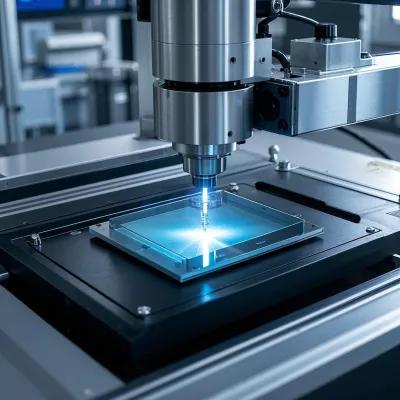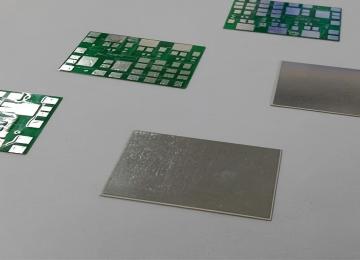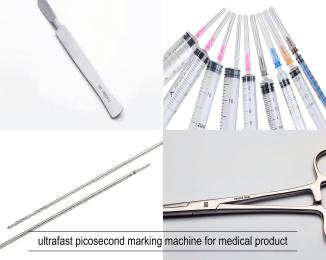
News
How to Achieve a Win-Win of High Precision and Low Cost?
In the manufacturing of flexible printed circuits (FPC), the precision and efficiency of drilling directly impact product performance and production costs. Traditional mechanical drilling often struggles to meet the dual demands of modern electronics manufacturing for micro-hole processing. Laser drilling equipment, however, presents new opportunities for the FPC industry. This article delves into the technical advantages of FPC laser drilling equipment and explores how it helps enterprises achieve a perfect balance between high precision and low cost.
1. Tchnological Breakthroughs of FPC Laser Drilling Equipment
Laser drilling uses high-energy-density laser beams to vaporize materials instantaneously, creating micro-holes with precise diameters and smooth walls. Compared to traditional mechanical drilling, laser drilling equipment offers significant advantages:
· Micron-Level Precision for High-Density Demands
Our FPC laser drilling equipment employs ultraviolet laser technology with a spot diameter as small as 30 microns, capable of processing holes under 0.1mm. For high-density interconnect (HDI) boards, this precision enhances circuit board integration, supporting more component placements and enabling the production of advanced electronic products.
· Non-Contact Processing to Avoid Material Damage
Laser drilling eliminates physical contact with FPC substrates, preventing mechanical stress and issues like material delamination and burrs. This is particularly crucial for ultra-thin FPC (e.g., 0.03mm thickness), improving product yield and reliability. Statistics show that our equipment boosts customer yield rates by 8–12%.
· Flexibility and Efficiency for Diverse Production
The equipment adapts quickly to different substrates and hole sizes by adjusting laser parameters (power, frequency, pulse width). Whether for polyimide, polyester, or new materials, it ensures stable, high-quality drilling, supporting flexible production needs.
2. Three Core Strategies to Reduce Costs
· Higher Efficiency, Lower Labor Costs
Laser drilling equipment operates fully automated, from substrate positioning to drilling. Our device processes 80,000 holes per hour—5 times faster than traditional mechanical drills. Simple operation reduces training time to just 2 hours, significantly lowering labor costs.
· Reduced Consumables for Lower Operational Costs
Unlike mechanical drilling, laser drilling requires no drill bit replacements. For a factory producing 1 million FPCs annually, our equipment saves over $70,000 in drill bit costs annually.
· Higher Yield Rates Cutting Waste Losses
The precision and stability of laser drilling reduce defects. Customer feedback shows a yield increase from 85% to 93%, saving over $400,000 annually in waste costs.
3. Three Key Metrics for Choosing Laser Drilling Equipment
· Precision and Stability
Our equipment features a high-precision galvanometer scanning system and closed-loop energy control, ensuring positioning accuracy within 5 microns and consistent quality.
· Processing Speed and Throughput
With high-speed laser scanning and intelligent path planning, our equipment processes 60,000 holes per minute, meeting large-scale production demands.
· Intelligence and Easy Maintenance
The smart control system supports remote monitoring and cloud-based diagnostics, while modular design reduces downtime by 60%.
Conclusion: Partner with a Professional Laser Equipment Manufacturer for Success
In today’s competitive FPC manufacturing landscape, choosing high-performance laser drilling equipment is key to staying ahead. As a professional laser equipment manufacturer with 15 years of experience and 500+ successful cases, we offer tailored FPC laser drilling solutions.
Our equipment combines high precision, efficiency, and intelligent design to lower operational costs. Whether upgrading your production line or exploring new markets, we are the best choice.
-
 Nov 14, 2025
Nov 14, 2025How to choose a glass substrate laser drilling machine? Analysis of three core elements.
-
 Nov 13, 2025
Nov 13, 2025How to Avoid Cracks and Improve Efficiency on Ceramics by Laser Cutting?
-
 Nov 12, 2025
Nov 12, 2025How Does an Ultraviolet Picosecond Laser Marking Machine Break Through Precision Processing Bottlenecks?
-
What are the precautions for operating a laser marking machine?
1. It is strictly prohibited to start the laser power supply and Q-switching power supply when there is no water or the water circulation is abnormal.
2. The Q power supply is not allowed to operate without load (i.e., the output terminal of the Q power supply should be left floating).
3. In case of any abnormal phenomenon, first turn off the galvanometer switch and the key switch, and then conduct a check.
4. It is not allowed to start other components before the krypton lamp is lit to prevent high voltage from entering and damaging the components.
5. Pay attention to leaving the output terminal (anode) of the laser power supply suspended to prevent sparking and breakdown with other electrical appliances.
6. Keep the internal circulating water clean. Regularly clean the water tank and replace it with clean deionized water or pure water.
-
What should we do when laser intensity decreases and the marking is not clear enough?
1. Turn off the machine and check if the laser resonant cavity has changed; Fine-tune the resonant cavity lens. Make the output light spot the best;
2. The acousto-optic crystal is offset or the output energy of the acousto-optic power supply is too low;
Adjust the position of the audio-visual crystal or increase the working current of the audio-visual power supply;
3. The laser entering the galvanometer deviates from the center: Adjust the laser;
4. If the current is adjusted to around 20A but the light sensitivity is still insufficient: the krypton lamp is aging. Replace it with a new one.
-
How to maintain a UV laser cutting machine?
1. It is required to carry out regular cleaning every day, remove debris from the countertop, limiters and guide rails, and spray lubricating oil on the guide rails
2. The waste materials in the collection box should be cleared regularly to prevent excessive waste from blocking the exhaust port.
3. Clean the chiller once every 15 days, drain all the internal water, and then fill it with fresh pure water.
4. The reflector and focusing lens should be wiped with a special cleaning solution every 6 to 8 hours.
When wiping, use a cotton swab or cotton swab dipped in the cleaning solution to wipe from the center to the edge of the focusing lens in a counterclockwise direction.
At the same time, be careful not to scratch the lens.
5. The indoor environment can affect the lifespan of the machine, especially in damp and dusty conditions.
A damp environment is prone to causing rust on the reflective lenses and also easily leading to short circuits, discharge and sparking of the velvet laser.
-
What accidents might be caused by the laser emission when using a laser cutting machine?
(1) A fire was caused by the laser coming into contact with flammable materials.
Everyone knows that the power of laser generators is very high, especially when it comes to high-power laser cutting machines, the temperature of the emitted laser is extremely high. The possibility of a fire being caused when a laser beam comes into contact with flammable objects is very high.
(2) Harmful gases may be produced when the machine is in operation.
For instance, when cutting with oxygen, it undergoes a chemical reaction with the cutting material, generating unknown chemical substances or fine particles and other impurities. After being absorbed by the human body, it may cause allergic reactions or discomfort in the lungs and other respiratory tracts. Protective measures should be taken when conducting work.
(3) Direct laser exposure to the human body can be harmful.
The damage caused by lasers to the human body mainly includes damage to the eyes and skin. Among the harms caused by lasers, the damage to the eyes is the most severe. Moreover, damage to the eyes is permanent. So when doing homework, you must pay attention to protecting your eyes.
-
What is the focused spot diameter of nanosecond, picosecond and femtosecond laser?
Nanosecond: The light spot is 0.5-1mm.
Picosecond: The focused spot is around 0.02mm.
Femtosecond: Under the action of a laser beam with a high repetition rate of 100-200KHz and a very short pulse width of 10ps,
the focused spot diameter is as small as 0.003mm.
-
What are the main applications of UV laser cutting machine?
The UV laser cutting machine can be used for cutting and depaneling PCB.
It can precisely cut and shape various types of PCB circuit boards with V-CUT and stamp holes, and open Windows and covers.
It can also be used for separating packaged circuit boards and ordinary smooth boards.
It is suitable for cutting various types of PCB substrates, such as ceramic substrates, rigid-flex boards, FR4, PCBs, FPCs, fingerprint recognition modules, cover films, composite materials, copper substrates, aluminum substrates, etc.
-
Precautions for laser cutting machines to process various metal materials?
Copper and brass:
Both materials have high reflectivity and excellent thermal conductivity.
Brass with a thickness of less than 1mm can be processed by nitrogen laser cutting.
Copper with a thickness of less than 2mm can be cut. The gas used for laser cutting processing must be oxygen.
Copper and brass can only be cut when a "reflective absorption" device is installed on the system. Otherwise, reflection will damage the optical components.
Synthetic materials:
Processable synthetic materials include: thermoplastics, thermosetting materials and artificial rubber.
Aluminum:
Despite its high reflectivity and thermal conductivity, aluminum materials with a thickness of less than 6mm can be cut, depending on the type of alloy and the capacity of the laser.
When cutting with oxygen, the cutting surface is rough and hard.
When nitrogen is used, the cutting surface is smooth.
Pure aluminum is extremely difficult to cut due to its high purity.
Only when a "reflection and absorption" device is installed on the fiber laser cutting machine system can aluminum materials be cut.
Otherwise, reflection will damage the optical components
-
What should be paid attention to when laser cutting stainless steel?
Laser cutting processing of stainless steel requires the use of oxygen, under the condition that edge oxidation is not a concern.
If nitrogen is used to achieve an edge free of oxidation and burrs, no further processing is required.
Coating an oil film on the surface of the sheet will achieve a better perforation effect without reducing the processing quality.



